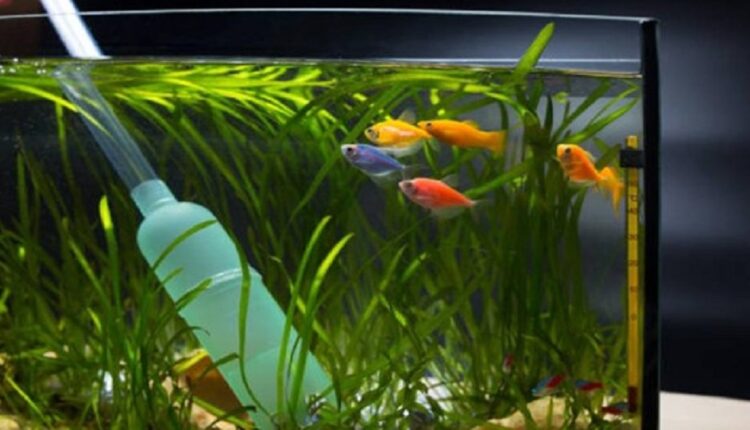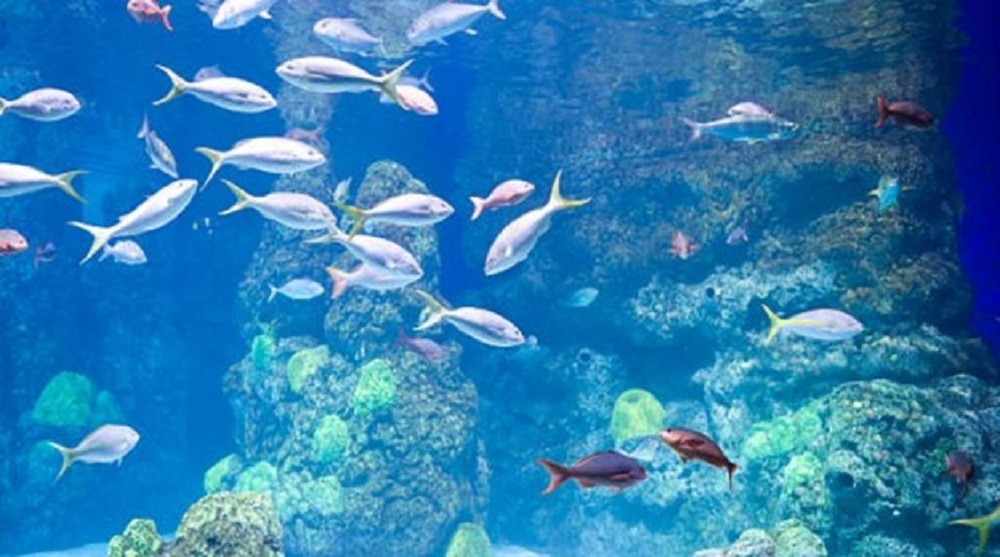Why Are Fish At The Top Of Tank?

Usually, aquarium fish are seen happily swimming and hanging out at different depths of the aquarium they live in. Some fish types mostly prefer to dwell near the bottom surface, while others are more interested in spending their days in the middle or upper regions of the aquarium. However, one thing you do not want to see is a pet fish that has started spending a lot of time right near the surface of the tank water—perhaps gasping—and apparently, in distress.
What Can Be The Possible Reasons for this behavior?
There can be several reasons behind a fish staying at the top of the tank. The most important one is the way how fish breathe.
A fish may be lingering near the tank surface because it can be trying to breathe more easily. Remember, fish breathe by absorbing dissolved oxygen, not oxygen already combined in the H2O molecule. Naturally, these dissolved oxygen levels seem to be higher near the aquarium surface, where interaction between water and air occurs.
A fish that is not receiving enough oxygen can try to compensate for the shortage by gravitating toward that area. Similarly, you may see your pet fish lingering near the bubbles of either your air stones or another bubble-producing décor in the aquarium.
What To Do If Your Fish Are Constantly Staying At the Top Of Tank?
A single fish might not be getting enough oxygen because of a problem with its gills, such as gill flukes, injury, or parasites. However, suppose you notice that multiple fish are trying to gather at your aquarium’s surface or stay at the top of the tank for a longer duration of time. In that case, there is possibly something wrong with the conditions of the habitat they are living in. Make sure that you check and rectify the following factors to ensure the health of your cute little fish:
1. Poor water quality
Start your troubleshooting process by performing a water test to figure out any possible issues with water quality (such as temperature, nitrite, nitrate, ammonia, hardness, pH levels, or salinity levels). Secondly, try to determine the rest of the reasons why your aquarium may be lacking oxygen. For example, if the water in your fish tank is polluted or cloudy, you may have a dead fish in the aquarium or overfeeding your fish. In any of these cases, you will need to replace as much water as is required in order to bring your aquarium conditions back into a healthy balance (typically, up to one-third of the water in the tank is recommended).
2. Overcrowding
With too many fish polluting the water quality and competing for the same air supply, an overcrowded tank can also cause low oxygen levels. For freshwater fish, begin with the rule of thumb of “one gallon per one inch of an adult fish,” but remember that this benchmark doesn’t consider the fact that some fish have larger bodies and some types are more taxing the tank environment than others. Use this rule only as a guideline while calculating the appropriate tank size, and then do additional research and talk with experts at your local pet store. (Also, make sure that you calculate the adult sizes of the fish in your tank—not the one- or two-inch juvenile fish you have kept).
3. Lack of Surface Area
Another cause of low oxygen levels in a tank can be a lack of surface area. Rather than considering only your tank volume, think about purchasing a new one with a larger surface area—that is, one with more air contact. Two tanks might have the same book, but if the shape of one enables it to have more surface area (shallower rather than taller), it will, most probably, have higher oxygen levels, and that’s always appreciated.
4. Improper water temperature
Water temperature can also influence oxygen concentration in an aquarium. Warm water has less oxygen than the cold one, so keep a strict check on your habitat’s temperature during the summer months. Avoid letting it increase too high for lengthy durations by regulating your water’s temperature with a chiller or fish tank heater.
5. Check sick fish for disease
Another thing that we should not forget during our troubleshooting process is to keep an eye on any possible sickness in the fish.
Fish diseases can make them lazy enough to hang in the water, listless and inactive, or motionless. Parasites can enter the fish’s body through its gill. It causes breathing to become even more complicated, and the fish will react as if the water has a low oxygen level by hanging restlessly at the surface. Check the fish for any signs of fungus, white spots, or slime. If it presents clamped pectoral fins, it can also be a sign of disease.
If you suspect any sickness, treat the whole aquarium with disease treatment, as the manufacturer recommends. If you have one, install an air stone and air pump to bring vital excess oxygen to the troubled fish and help it breathe.
6. Lack of aeration
Another factor causing fish to stay on the tank top is the lack of proper aeration.
You should keep your fish’s home water on the move. Mixing existing water with the surface water is a great idea to maintain good water quality and a good supply of dissolved oxygen throughout the aquarium. A set-up of properly maintained tank filters is essential for removing waste. An even more potent form of aeration—for instance, a powerhead—may also be needed in some conditions. Bubble-producing décor elements like a bubble wand or an air stone can also add small amounts of oxygen, but they are more for decorative purposes.
Can low oxygen levels, ammonia, and fish diseases affect my aquarium fish?
In extreme situations, a fish may hang at the top because of high ammonia, low oxygen levels, and disease, a typical example of which would be a goldfish in an unfiltered cold water bowl. The condition can come from the stress of being exposed to poor water quality, and chances are few fish could survive these three circumstances for long.
That’s why we recommend a proper aquarium filled with filtered water that’s matured and stocked slowly, with appropriate test kits to test water quality. Add beneficial filter bacteria regularly to ensure that oxygen levels are always high, either by way of a venturi supplied with your internal power filter or air stone and a separate air pump.
Are There Any Surface Swimming Freshwater Fish?
There will always be some exceptions, like fish that are meant to stay at the top of the tank, no matter what. Surface-dwelling fish include Hatchet fish, Zebra danios, and Guppies. They are naturally inclined to stay and swim at the surface in the wild to be first to the food. All are supposed to be active and feed when at the surface, however, with spread fins and bright eyes. If any surface-dwelling fish stays in one place, with a shimmy and gasp appearance, look to the rest of the underlying causes like the ones we have listed above.
How To Fix Low Oxygen Levels in Tank?
If your aquarium has low oxygen levels, you can quickly fix it by getting an airline air stone, air pump, and tubing. If you have got an air stone, place it in one corner of the tank where you want to add up oxygen and run the tube so that it gets smartly hidden behind driftwood or some décor.
they should run an air pump all day long to ensure that enough oxygen is being supplied to the tank. If you have got a huge tank, you may need multiple air stones to get enough oxygen dissolved into the water to fulfill the breathing requirements of fish living in.
Conclusion
If an individual fish stays and constantly swims at the top of the tank, we may assume that there is a shortage of oxygen in tank water, so the fish has to come up to absorb oxygen at the level of interaction between air and water. But, if many fishes (yes, fishes, a grammatically correct term used as plural) start staying and swimming at the surface of an aquarium, this is something that no fish keeper ever wants to come across. The underlying reasons behind this behavior are known and pretty easy to fix. Thus, there is an easy troubleshooting process to manage such a condition. First of all, you have to perform a water quality test if high amounts of pollutants, nitrates, or nitrates are dissolved in the water, making it hard for the fish to stay at the beginning of the aquarium. Second, we have to check if our aquarium is overcrowded. Fish do not enjoy staying in an overpopulated environment. Thus, if you have got plenty of fish making a tank overcrowded, you need to get another to accommodate them all. I hope this article helped you have a better understanding of fish and their behavior.



